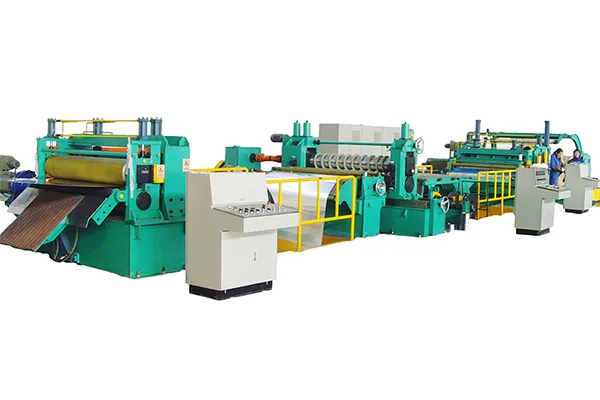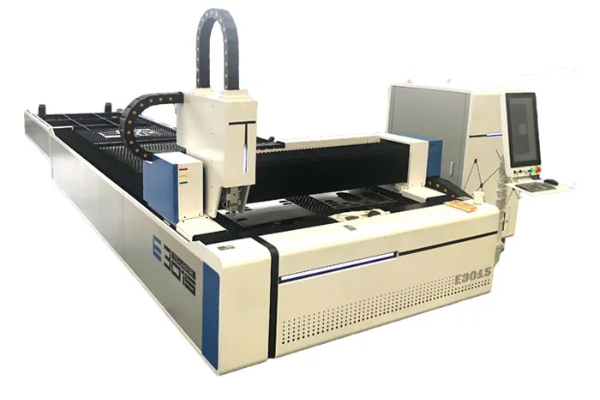
How to Achieve Accurate Cuts with a Metal Guillotine Machine
- By:Metmac
- 2024-08-07
- 128
Guillotine machines are a vital tool in metalworking, providing precise and efficient cuts. To ensure accurate results and minimize errors, it’s crucial to understand the proper techniques and considerations involved. This guide will provide a comprehensive overview of key aspects to consider when aiming for accurate cuts with a metal guillotine machine.
Proper Blade Selection and Maintenance
The choice of blade is paramount for a sharp and clean cut. Tungsten carbide blades are often preferred for their durability and resistance to wear. Ensure the blade is properly sharpened and free of any nicks or burrs. Regular maintenance, including sharpening and lubrication, will extend the blade’s life and prevent inaccurate cuts.
Accurate Alignment and Squareness
Before making a cut, ensure the metal sheet is properly aligned. Use a squaring arm or protractor to align the material accurately. The hold-down clamps should securely hold the sheet in place, preventing it from moving during the cutting process. Squareness is equally important to achieve precise 90-degree cuts. Use a combination square or a digital angle gauge to check the squareness of the blade.
Proper Cutting Technique
Apply even pressure across the entire cutting length. Avoid sudden movements or excessive force, as these can cause the material to deflect and result in an inaccurate cut. The guillotine action should be smooth and controlled, allowing the blade to penetrate the metal gradually. For thick or hardened materials, multi-pass cutting may be necessary to achieve a clean and precise cut.
Material Preparation and Support
The condition of the material can influence the accuracy of the cut. Ensure the metal sheet is flat and free of any warpage or bends. Use a backing material, such as a wooden block, to support the material during the cut. This prevents the edges from buckling or distorting, resulting in a more accurate cut.
Machine Calibration and Inspection
Regular machine calibration and inspection are essential for maintaining accuracy. The cutting width, blade sharpness, and hold-down pressure should be routinely checked and adjusted as needed. Use a certified calibration block to ensure accurate cutting measurements. Conduct a visual inspection of the machine regularly, looking for any loose bolts, damaged components, or wear and tear that could affect its performance.
Conclusion
Achieving accurate cuts with a metal guillotine machine requires careful attention to several key aspects, including blade selection and maintenance, proper alignment and squareness, cutting technique, material preparation and support, and machine calibration and inspection. By adhering to these guidelines and performing regular maintenance, you can ensure that your guillotine machine delivers consistent, high-quality cuts.
-
Reliable Sheet Metal Equipment for Sale to Support Precision Fabrication
2025/07/17 -
Advanced Duct Machine AC and Fabrication Solutions from Metmac
2025/07/12 -
The Advantages of Using a Sheet Roll Forming Machine in Manufacturing
2024/09/14 -
How to Optimize Your Laser Sheet Cutting Machine for Maximum Performance
2024/09/12
-
Precision and Value: Exploring Metal Sheet Cutting and Roll Forming Machines
2025/09/06 -
High-Performance Sheet Metal Machines for Precision Fabrication
2025/09/06 -
Advanced Sheet Metal Cutting Solutions for Precision and Efficiency
2025/09/06 -
Efficient Sheet Metal Laser Cutting and Press Brake Solutions
2025/08/20
-
A Guide to the Latest Innovations in Sheet Metal Folding Machines
2024/11/29 -
Key Features to Consider When Investing in a Sheet Metal Folding Machine
2024/11/28 -
Enhancing Precision with Advanced Sheet Metal Folding Machines
2024/11/27 -
How to Choose the Right Sheet Metal Folding Machine for Your Workshop
2024/11/26




